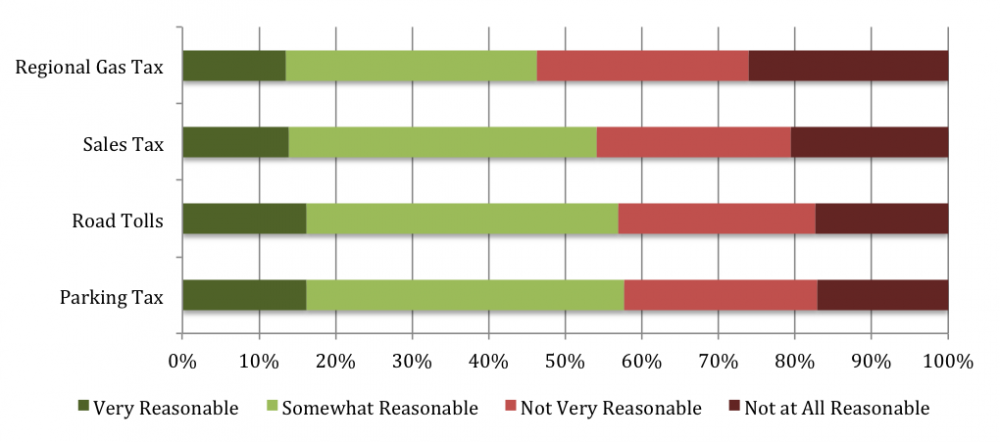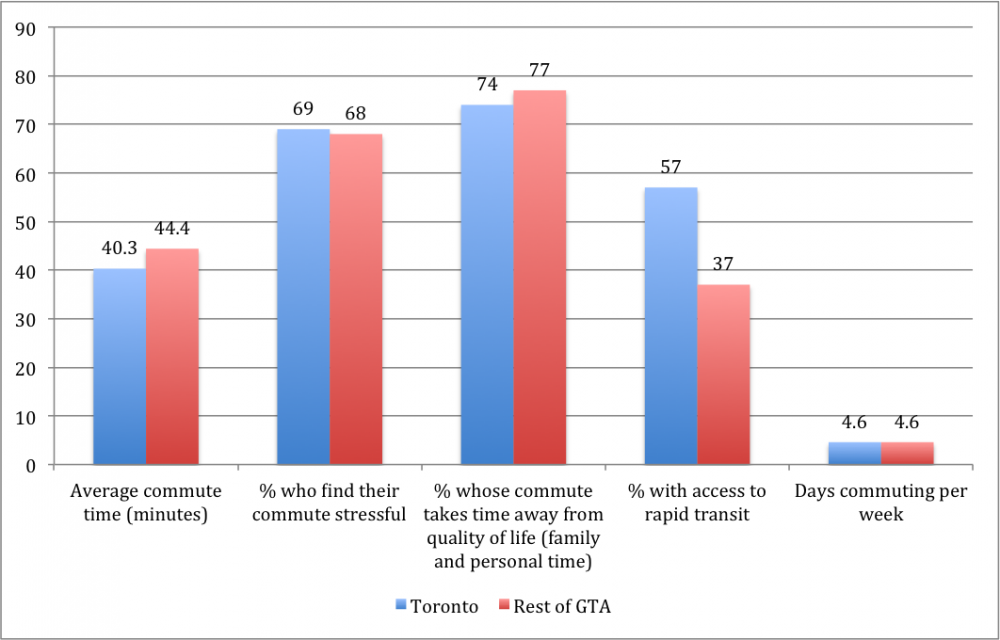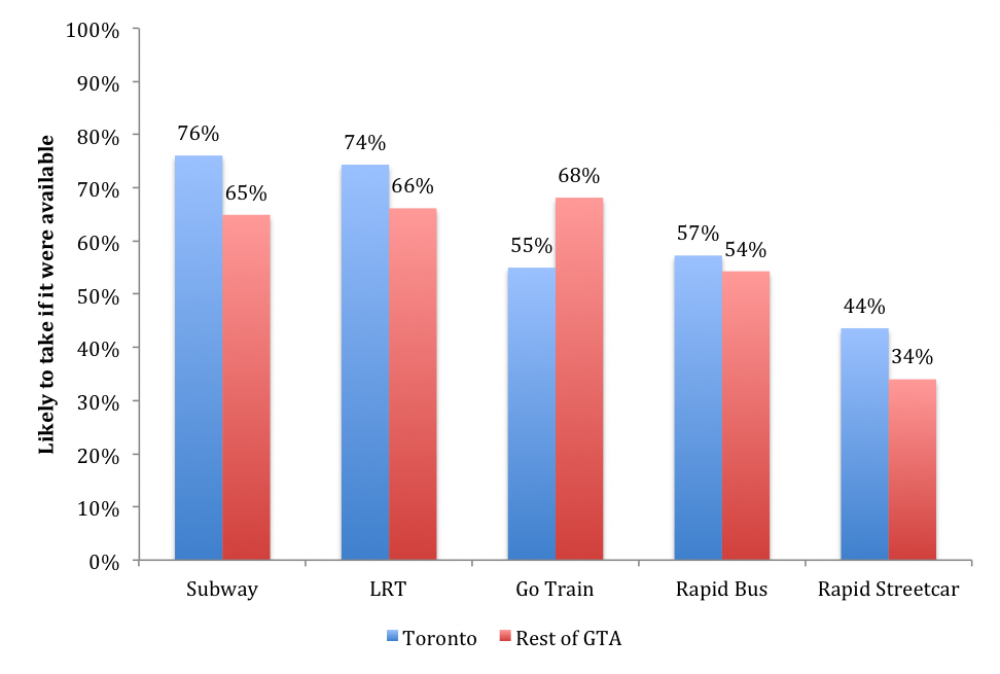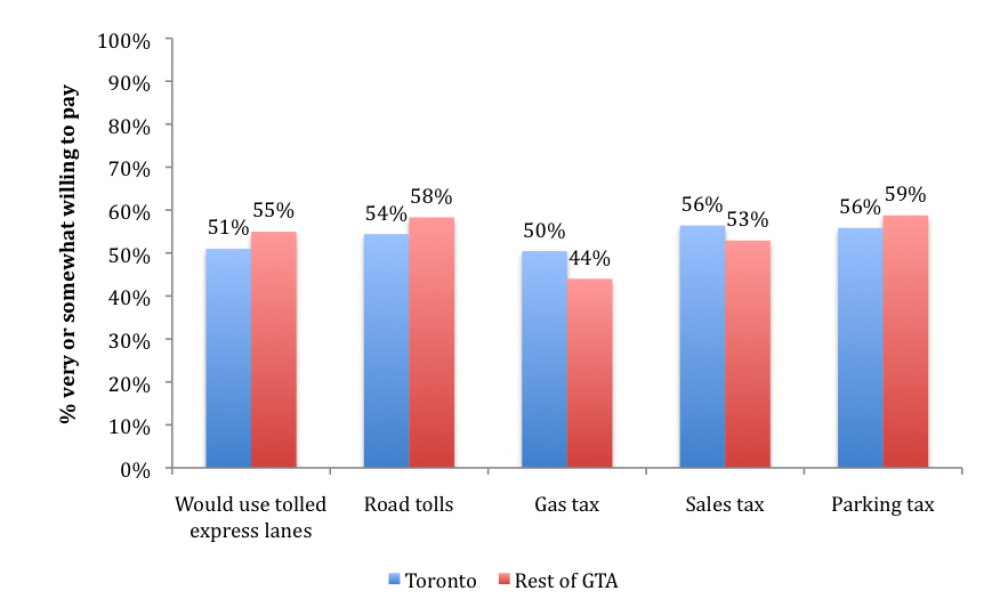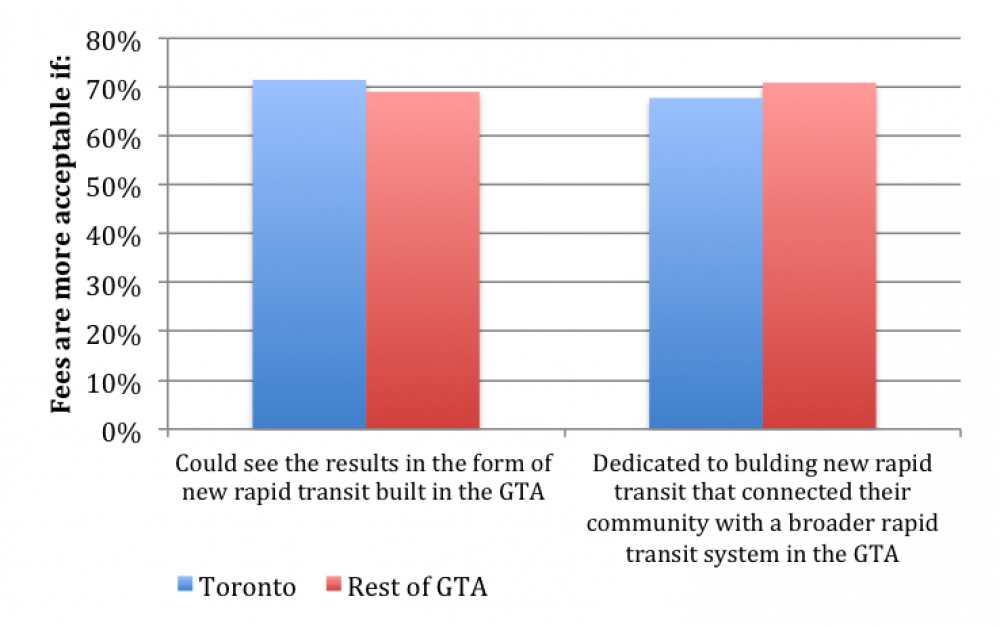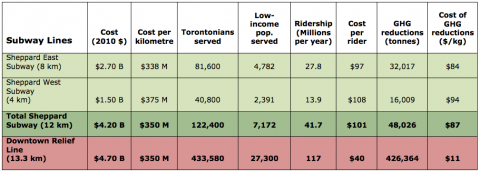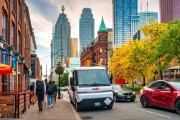Congratulations to Metrolinx, Toronto’s regional transportation agency, for delivering the final kick in the pants to get Toronto moving with light rail transit (LRT). Earlier this week, the Metrolinx board approved its plan for the construction of four LRT lines voted on by Toronto council this year.
While these new LRT lines will provide relief to priority neighbourhoods in the Toronto area, transit enthusiasts in Ontario know that these four lines are part of a larger regional plan — The Big Move — that promises to deliver a rapid transit network for the Greater Toronto and Hamilton area. If this promise comes through, 81 per cent of the population in the region will be within two kilometres of a rapid transit line, a fast and convenient alternative to getting to work.
The challenge is how to pay for the Big Move. With the current tax based tapped out, Metrolinx is tasked with developing an investment strategy by 2013 — and with a price tag of $50 billion over 25 years, all options are on the table. Some options may include the private sector or public-private partnerships, but pricing tools like user fees and new taxes are unavoidable.
A number of recent polls have surveyed the general public about their opinions on some of these contentious funding options — road tolls, gas taxes, parking fees, sales taxes, etc. — yet every one of these polls has shown moderate to strong support.
So what do drivers think?
With the goal of helping to inform the debate, the Pembina Institute set out to understand the opinions of the road warriors themselves. We worked with Environics to conduct a survey of drivers in the GTA whose minimum commute time was 30 minutes one way.
The results of our survey are presented in detail in our report: Drivers Choice: Options to manage gridlock and fund rapid transit in the region and in a story that ran in the Toronto Star. In short, we found that up to 58 per cent of GTA drivers are at least moderately supportive of tolls, sales taxes and parking fees, and the level of support varied little between the type of pricing mechanism (see graph below). This is good news, because raising the funds needed to unlock gridlock will require a combination of those pricing tools.
Table 1: Acceptability of pricing options
How reasonable are these policies to raise funds for transit expansion and improving road and highway travel:
But that’s just a start. Drivers surveyed showed significantly higher support for pricing policies that are fair, transparent and dedicated to building rapid transit in the region:
- 70% of drivers surveyed were more willing to pay a user fee on a highway or road if the funds were used to build new rapid transit in the GTA.
- 69% were more willing to pay a user fee on a highway or road if it the fee was dedicated to building new rapid transit that connected their community with a broader rapid transit system in the GTA.
- 69% would find a road toll more acceptable if the funds were fully dedicated to building a rapid transit line close to this same route.
- Of those who supported a user-pay road toll, most (68%) thought it should only be charged on routes where drivers currently have access to rapid transit alternatives.
- Of those who found tolls unreasonable, almost half (46%) thought them to be more acceptable if they were only on routes where rapid transit alternatives exist.
Overall, the survey results suggest that it’s not a matter of if revenue tools should be introduced in the GTA, but rather how, where and when.
Lessons from other jurisdictions demonstrate that acceptance improves with actual implementation, suggesting that while people may have a negative attitude toward a pricing tool when it is first proposed, they come to be more accepting once programs are in place.
In Stockhom for example, support for a proposed road charge sat originally at 30 per cent, but increased to 50 per cent after the charge was tested in a trial. Popular support rose again to 70 per cent after the tolls were reintroduced. Similar acceptance trends occurred for London’s congestion charge and Norway’s road toll. Closer to home, Environics research shows that support for B.C.’s carbon tax was at an all time high (57%) in November 2011, compared to only 40 per cent when it was introduced in July 2008.
Jurisdictions with less-jammed-up highways than the GTA have implemented bold solutions, such as Montreal’s regional gas tax (with funds raised dedicated to the Metro transit system), Vancouver’s property tax and gas tax increases (which contribute funds for a regional transit plan) and Los Angeles’ sales tax (which is funding a light rail transit system already under construction).
Back to drivers in the Big Smoke
Toronto Councillor Josh Matlow is asking fellow councillors to consider either road tolls or a regional sales tax as a way to build subways and improve transit in Toronto and across the Greater Golden Horseshoe. With respect to this, we separated the data from our survey to understand more about drivers within the City of Toronto.
Here are some interesting statistics for Toronto councillors to consider:
- A long congested drive knows no boundaries. One-third of our survey respondents hail from the 416, with an average commute time of 40 minutes. (By comparison, the average commute for all GTA drivers was 43 minutes.)
Like drivers in other parts of the GTA, 84 per cent of Toronto’s long-haul urban drivers surveyed take a major highway to get to work.
Table 2: Commute characteristics for Toronto and GTA drivers
While Toronto drivers currently have better access to rapid transit than drivers in the outer regions, the survey found strong support for rapid train transit among those Toronto drivers who currently don’t have a transit option. Approximately 65 per cent of drivers surveyed in the suburbs said they would consider taking a subway or an LRT if it was available to them; meanwhile, metro Toronto drivers were even keener — 75 per cent said they would hop on board a rapid train if the option existed.
Table 3: Drivers' likelihood to take transit
2. Toronto drivers are just as willing to pay for options. Twenty-eight per cent of Toronto drivers we surveyed take the Don Valley Parkway, and 21 per cent take the Gardiner Expressway (some may take both).[i] The City of Toronto has jurisdiction over both highways, and tolls are not out of the question, as the table below illustrates.
Table 4: Drivers' willingness to pay, by pricing option
3. Toronto drivers want results for their money. Drivers outside the 416 were most supportive of funds dedicated to connecting their communities to a rapid transit network in the region. It’s no surprise, given that buses in traffic represent the current transit reality in those areas — how exciting would it be to have rapid trains or dedicated busways as options for commuting in from the ’burbs! As for drivers within Toronto, their support-o-meter was highest if they could actually see the results of transit lines being built in real time. Given the stop-and-go progress of Toronto’s transit plans over the past decade or more, this also makes sense. Seeing is believing.
Table 5: Support for tolls and fees depends on dedication of funds
4. Funds need to be strategically allocated. The Toronto Star’s Royson James rightly noted in his recent column that Mayor Ford’s subway campaign may have surreptitiously generated public support for new taxes and fees to fund subways — ironic given the Mayor’s delivery on his election promise to kill the vehicle registration tax.
However, the alarm bells ring at the possibility of any municipality in the GTA taxing its residents to pay for pet transit projects that are not part of a broader plan or serve the most riders. Funds are scarce; the province’s $8.4-billion investment in Toronto’s four light rail transit lines was a one-time injection for the next decade. And raising revenue from the public is a difficult and delicate endeavour; it needs to be a strategic regional effort, and funds need to be prioritized to transit improvements and new projects with the highest priority in Toronto and outside of Toronto, as has been carefully mapped out by the Big Move.
A number of Toronto-based transit projects require funding, such as the downtown relief line, as well as Waterfront West and the other LRTs once part of the Transit City plan. For example, at about the same cost per kilometre, a downtown relief subway would serve 3.5 times the number of Torontonians as a Sheppard east and west subway.
Table 6: Comparing various subway options and outcomes for Toronto
Torontonians are ready for those four LRT lines, but congestion and transit infrastructure needs are regional problems and the Big Move is a regional solution. North America’s most seasoned road warriors are prepared to be part of the solution.
[i] Note that we only surveyed drivers who have one-way commute times of 30 minutes or more – so the survey does not reflect the opinions of the users of the DVP or Gardiner Expressway who have commutes of less than 30 minutes.

